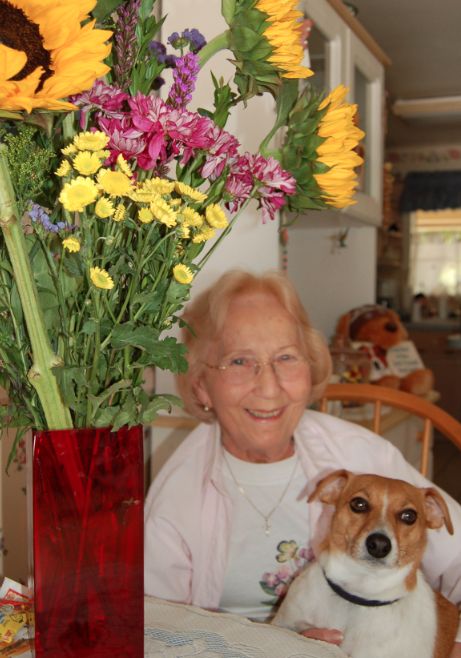The scariest part of Elizabeth Murphy’s story is not that she suffered traumatic injuries. The scariest part is that it could have happened to any of us.

Unlike other trauma survivors whose injuries came from atypical or extraordinary events, the 77-year-old Phoenix grandmother was just taking care of her geraniums in her back yard a little over two years ago when everything changed.
“I looked up from the flowerpots and saw something I needed to get by the end of the fence on the other side of the yard,” she recalled. “But when I stood up to go get it, I tripped over a two-by-four and fell to the ground. I actually heard my neck bone crack.”
That small fall resulted in very large damage. She fractured her skull, broke her neck and suffered brain hemorrhages and contusions.
“I couldn’t move after I fell,” she said. “I lay there for almost a hour, crying for help, before anyone answered.” Her neighbors, both teachers, were at work. Neighbors on the other side were indoors and couldn’t hear her. Finally, a neighbor’s son came out into an adjacent yard, heard Murphy’s cries for help, and came to her aid, calling 911.
“There was one funny moment,” she recalled. “When the EMTs came to rescue me, they needed to get my jeans off so they could stabilize my injuries. I told them just to cut them off, but they were careful and removed them without damaging them. I still have those jeans!”
After EMTs took her to the Level I Trauma Center at John C. Lincoln North Mountain Hospital, neurosurgeon Gianni Vishteh, MD, performed two separate surgeries to repair her complex neck fractures and to treat her brain hematomas.
“They put me in a halo,” Murphy said. The halo, a metal frame that is surgically bolted to the skull and attached to a stiff vest, protects patients from potential paralysis. It immobilizes a patient’s head so that life-threatening broken vertebrae in the neck can heal without damaging the spinal cord.
After almost a month in the hospital, she was allowed to go home, but the halo went with her. “I laid in bed with that halo for three months. It took a long time to recover,” she said. “And the vest was really uncomfortable.”
The only good part of her experience, she said, was patient care at North Mountain. “They took wonderful care of me at John C. Lincoln Hospital. There was one point when my nurse got the vest open long enough for a sponge bath, and that just felt so good. I say ‘Thank you, thank you’ to the doctors and nurses. I couldn’t have recovered without them.”
She also had one particularly happy moment with the halo after leaving the hospital. “My husband Ron was very active in Shepherd of the Valley Lutheran Church, and even though he died 10 years ago, I’m still a faithful member there. One Sunday while I was in the halo, I became part of the children’s Sunday School lesson and they took a picture of me with a big smile, wearing a crown on top of my head inside the halo.”
Murphy, a retired executive secretary who worked for 25 years for the Washington Elementary School District, now lives with her devoted Jack Russell terrier, Buddy, and has “lots of friends and family who check on me,” she said. Although her daughter, Kathleen, son-in-law and two grandchildren live in southern California, her sons Dan and Jim live in Phoenix and are regular visitors at their mom’s house.
“The injury has changed my life,” she said. “There are some things like driving that I can’t do any more, that my sons help me with, but in most ways my life is back in business.” She’s proud that she still takes care of all the housekeeping and financial business of her life by herself.
“But most of all,” she said, “I’m grateful that I’m still alive. It’s amazing grace.”
